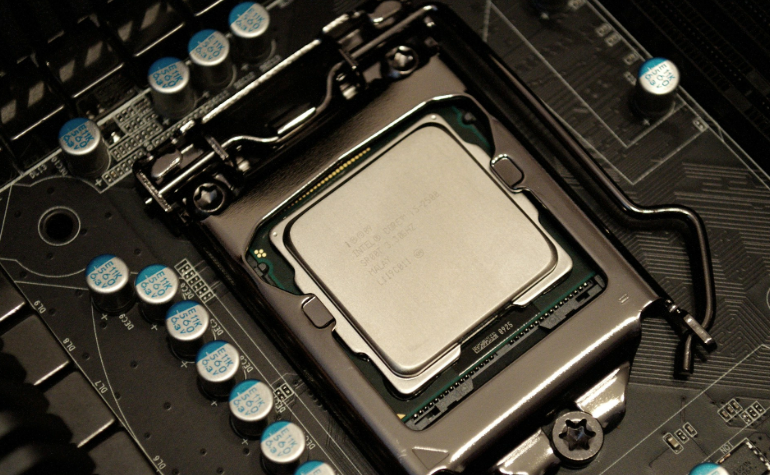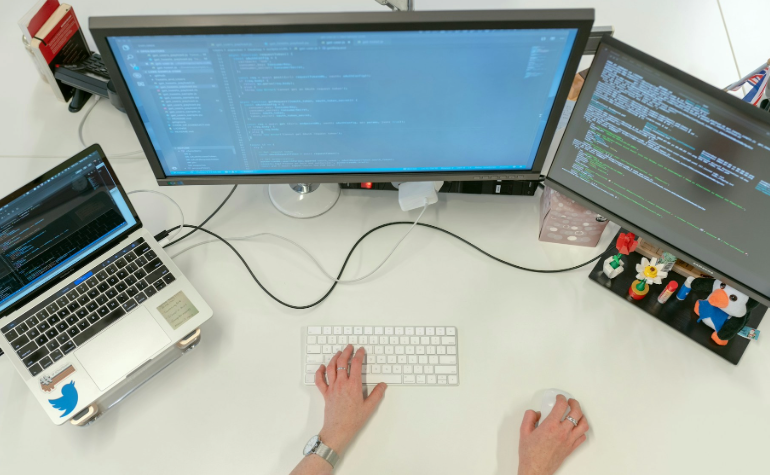3-Step Overclocking Guide for Sandy Bridge v0.1beta2
Unlock your CPU's potential with our easy 3-step overclocking guide specifically for Sandy Bridge v0.1beta2. Get started now!

Welcome to our comprehensive guide on how to efficiently overclock the Sandy Bridge v0.1beta2 processor. Overclocking can seem daunting, but with our easy-to-follow, three-step process, you'll be able to enhance your CPU’s performance beyond its factory settings safely and effectively. Whether you're looking to boost your gaming experience, increase your system’s processing speed for creative software, or just squeeze out more power for general use, this guide is tailored to help you achieve those goals with minimal fuss.
One of the most significant advantages of overclocking your Sandy Bridge v0.1beta2 is the noticeable improvement in system performance. By adjusting your CPU's clock frequency, you're enabling it to handle more tasks at faster speeds. This can be particularly beneficial for resource-intensive applications such as video editing, 3D rendering, and high-resolution gaming. Not only does overclocking maximize the efficiency of your processor, but it also provides a more responsive and enjoyable computing experience. Let's dive into the steps you need to take to unlock the full potential of your processor.

Understanding the Basics of Overclocking
Overclocking is the process of pushing your computer's central processing unit (CPU) past its advertised operating speed, aiming to enhance overall system performance. This technique has been widely adopted by computer enthusiasts and gamers to gain extra performance without the need for hardware upgrades. Understanding the basics of overclocking is crucial before attempting any adjustments to ensure you maximize gains while minimizing potential risks.
What is Overclocking?
Overclocking involves adjusting various system settings to increase the clock rate of your computer’s processor, memory, and sometimes even other components. The primary goal is to make these components run at higher speeds than their standard specifications. Key adjustments include:
- Increasing the CPU Multiplier: This directly increases the frequency of the CPU.
- Adjusting the Voltage: Providing more power to the CPU to maintain stability at higher speeds.
- Tweaking Memory Timings: Speeding up data transfer rates between the CPU and RAM.
These changes can lead to significant improvements in performance, particularly in scenarios that demand heavy computing power, such as gaming, video rendering, and software compiling.
Risks Associated with Overclocking
While overclocking can offer considerable benefits, it also comes with its own set of risks which should not be overlooked:
- Increased Heat Output: Overclocking generates additional heat, which if not properly managed, can damage components.
- System Instability: Pushing components beyond their intended limits can lead to system crashes, data loss, and erratic behavior.
- Reduced Component Lifespan: Operating at elevated voltages and temperatures can accelerate wear and tear, potentially shortening the lifespan of the hardware.
Taking measures such as investing in better cooling systems, gradually increasing speeds, and conducting thorough stability tests can help mitigate these risks.
Exploring the fundamentals of overclocking provides a solid foundation for safely enhancing your computer's performance. As you consider overclocking your Sandy Bridge v0.1beta2, remember that each CPU is unique in its capabilities and limitations. Careful planning and continuous monitoring are essential to achieve a stable and effective overclock. With the right approach, you can unlock a new level of performance while keeping your system running smoothly.
Preparation for Overclocking
Before you begin overclocking your Sandy Bridge v0.1beta2, it's essential to prepare adequately to ensure that the process is smooth and the outcomes are successful. This preparation includes gathering the necessary tools and software, performing initial system checks to ensure your hardware is in optimal condition, and establishing a baseline to measure the improvements.
Tools and Software Needed
To effectively overclock your CPU, you will need specific tools and software that aid in adjustment and monitoring:
- CPU-Z: For monitoring your CPU’s specifications and performance in real time.
- Prime95: To stress test the CPU and ensure stability after overclocking.
- MSI Afterburner or Intel XTU: For adjusting the CPU multiplier and voltages directly from the desktop.
- HWMonitor: To keep an eye on the temperatures and voltages during the overclocking process.
These tools will help you modify settings safely and track the effects of your adjustments.
Initial System Checks
Before tweaking any settings, conduct these critical checks to ensure your system is ready for overclocking:
- Check System Cooling: Ensure that your cooling solutions are adequate to handle increased heat.
- Update BIOS/UEFI: An updated BIOS/UEFI can provide improved stability and sometimes new features that aid in overclocking.
- Inspect for Physical Damage: Look for any signs of wear or damage on your CPU and motherboard which could impact overclocking results.
Creating a Baseline Performance Benchmark
Establishing a performance baseline is crucial before you start making any changes. This step involves:
- Running Benchmark Software: Use tools like Cinebench or 3DMark to record the current performance of your CPU.
- Documenting Initial Settings: Note down all current BIOS settings before making adjustments. This provides a recovery point if needed.
- Evaluating System Stability: Confirm that your system is stable at stock settings by running extended stress tests.
With all the necessary tools in place, initial checks completed, and a baseline established, you're now set to start the actual overclocking process. This preparation not only sets the stage for a successful overclock but also minimizes the risks involved, ensuring that you can enjoy enhanced performance without undue stress on your components.

Step-by-Step Overclocking Process
The actual process of overclocking your Sandy Bridge v0.1beta2 involves a series of precise steps designed to safely enhance your CPU's performance. This guide will walk you through adjusting BIOS settings, conducting stress tests to ensure stability, and fine-tuning your system to achieve optimal performance.
Adjusting the BIOS Settings
The first step in overclocking involves tweaking settings in your system’s BIOS:
- Access the BIOS: Restart your computer and enter the BIOS setup (commonly by pressing F2, F10, or Del during boot).
- Modify the CPU Multiplier: Increase the multiplier by small increments to raise the CPU clock speed.
- Adjust CPU Voltage (Vcore): Increase the voltage slightly to maintain stability at higher frequencies.
- Enable XMP Profile: If overclocking RAM, enable XMP to set correct memory frequency and timings.
Make incremental changes and reboot regularly to ensure that each setting modification maintains system stability.
Stress Testing and Stability Checks
After adjusting your settings, it’s crucial to validate the stability of your overclock:
- Use Stress Testing Tools: Run tools like Prime95 or AIDA64 to put high loads on the CPU and check for stability.
- Monitor Temperatures and Voltages: Keep an eye on temperatures using HWMonitor or a similar tool. Ensure they do not exceed safe limits.
- Look for Errors: Watch for system crashes, blue screens, or application errors, which indicate instability.
These tests help verify that the overclock is stable under load conditions.
Fine-Tuning for Optimal Performance
Once you confirm stability, fine-tune your overclock to balance performance and longevity:
- Adjust for Thermal Headroom: If temperatures are too high, reduce the voltage or clock speed.
- Test Different Settings: Experiment with slightly different multipliers and voltages to find the best combination for your specific chip.
- Continual Monitoring: Regularly monitor system performance and temperatures to catch any potential issues early.
Each processor is unique, and finding the sweet spot for your specific unit might require some patience and multiple adjustments.
The process of overclocking can significantly enhance your computer's performance, making your system faster and more responsive. By carefully following these steps and continually monitoring your system, you ensure that the gains from overclocking are secured without compromising the integrity or longevity of your components. This approach not only provides immediate performance enhancements but also helps maintain the health of your system over time.
Troubleshooting Common Issues
Overclocking your Sandy Bridge v0.1beta2 can sometimes lead to unforeseen issues that affect performance and stability. This section outlines effective strategies for troubleshooting common problems such as overheating, system instability, and restoring default settings, ensuring that your overclocking experience remains positive and your system stays reliable.
Dealing with Overheating
Overheating is a frequent concern when overclocking and can lead to serious damage if not addressed promptly:
- Enhance Cooling Solutions: Consider upgrading your CPU cooler or adding better case fans to improve air circulation.
- Adjust Fan Speeds: Increase the fan speed settings in the BIOS or through software to help keep temperatures down.
- Reduce Overclock: If temperatures exceed safe levels, lower the CPU multiplier and voltage to reduce heat output.
Monitoring temperatures closely during stress testing will help you identify and mitigate overheating issues before they cause harm.
Handling System Instability
System instability can manifest as crashes, freezes, or erratic behavior, particularly under load:
- Increase Voltage: Sometimes a slight increase in voltage is necessary to maintain stability at higher clock speeds.
- Reduce Overclock: If increasing voltage doesn’t help, reduce the overclock to a lower, stable setting.
- Check RAM Stability: Overclocking the CPU can affect RAM stability. Test RAM with tools like MemTest86 to ensure it isn't causing instability.
By methodically adjusting and testing each setting, you can identify the cause of instability and find a stable overclock.
Resetting to Default Settings
If overclocking results in unsolvable issues or if you simply want to revert to standard settings:
- Clear CMOS: Reset the BIOS to default by using the clear CMOS jumper on the motherboard or by removing the CMOS battery for a few minutes.
- Restore BIOS Defaults: Enter the BIOS setup and select the option to restore default settings. This reverses all overclocks back to the original specifications.
Resetting your system to default settings provides a clean slate to start the overclocking process anew or to troubleshoot specific issues without the variables introduced by overclocking.
Navigating through these common overclocking challenges effectively increases both the performance gains and the longevity of your hardware. While troubleshooting can sometimes be complex, having the right strategies at your disposal simplifies the process, helping you maintain a stable and efficient system even under the demands of overclocking.

Popular Articles
Cooler Master H612PWM Review: Top Performance & Quiet
Corsair Dominator Platinum: High-Performance RAM
Revolutionizing CPU HSF Testing: New Techniques & Insights
Thermaltake Element V Black Edition Review: Ultimate Performance





